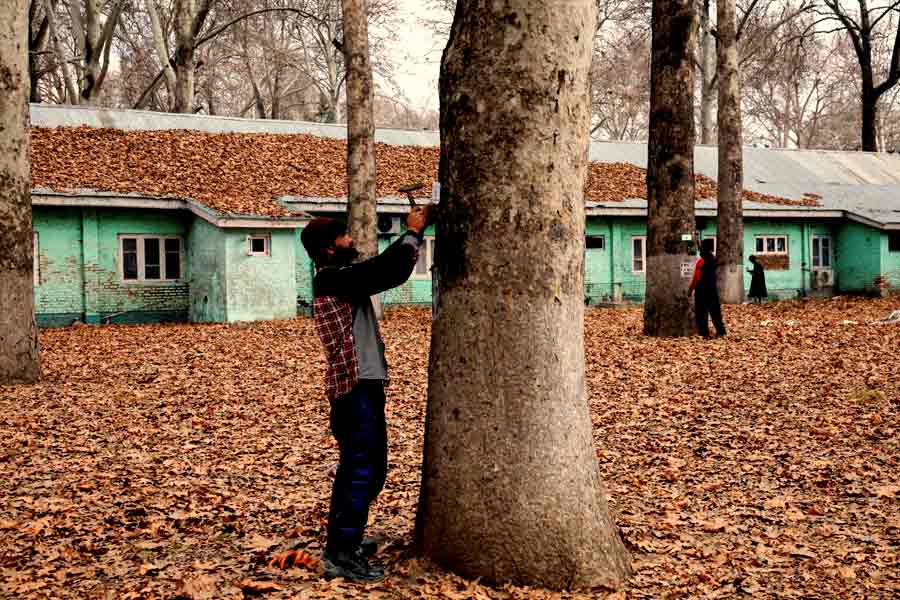 Wednesday, 22 January 2025
Wednesday, 22 January 2025
 Wednesday, 22 January 2025
Wednesday, 22 January 2025
A woman drinks water to get relief from the scorching heat on a hot summer day, in New Delhi, Tuesday, June 18, 2024. As swathes of northern and eastern India endure an unyielding heat wave, the nation finds itself in the throes of a climate crisis that has led to increased heat stroke casualties and a scramble for resources. The unrelenting heat, sweeping across vast regions, has claimed at least 110 lives and left over 40,000 people grappling with suspected heatstroke between March 1 and June 18 this year, according to Health Ministry sources. Temperatures in most parts of northern India have stubbornly remained above the 40-degree Celsius mark, with conditions persisting relentlessly.
Patients being admitted due to heat stroke and exhaustion at LNJP hospital, in New Delhi, Wednesday, June 19, 2024. The power ministry has urged all utilities to 'maintain a high state of alert and minimise forced outages of equipment,' as the surging heat wave drives electricity demand, particularly in the northern region where the monsoon has yet to arrive. The power grids are under immense pressure, with an increase in incidents of short circuits and fires.
A vendor carries air coolers, seen on a hot summer day, in New Delhi, Tuesday, June 18, 2024. In a bid to shield their delivery partners from the scorching heat, food delivery and e-commerce platforms have implemented various measures. Meanwhile, the police recovered the bodies of 50 people from underprivileged socioeconomic backgrounds around Delhi in the past 48 hours. The searing heat wave has caused a spike in casualties and heatstroke cases, though officials have not confirmed if all deaths were heat-related.
New Delhi Municipal Corporation (NDMC) workers move a water tanker amid heatwave and water crisis, in New Delhi, Tuesday, June 18, 2024. Maximum temperatures ranged from 43 to 45 degrees Celsius in many parts of Punjab, Haryana, Chandigarh, Delhi, Uttar Pradesh, and north Rajasthan, according to the India Meteorological Department (IMD). A fresh western disturbance is expected to bring some relief to the northern region. The blistering heat has left many scrambling for water, with storage levels in reservoirs and rivers hitting record lows.
A man covers a child with a scarf during heatwave, in New Delhi, Saturday, June 14, 2024. The heat wave has also exacerbated health conditions such as lupus, which affects the skin, joints, and kidneys, among other organs. Patients with lupus frequently experience flare-ups and aggravated symptoms as temperatures rise.
A CRPF personnel sips coconut water during a hot summer morning, in New Delhi, Thursday, June 20, 2024. This summer, India is experiencing one of its hottest periods on record. The IMD reports that around 40 percent of the country has recorded double the number of heatwave days compared to usual.
A crow bathes in a puddle of water during a hot summer morning, in New Delhi, Thursday, June 20, 2024. Rajasthan has hit 50 degrees Celsius twice in recent weeks, and Delhi has recorded temperatures above 40 degrees Celsius for 36 consecutive days. Experts attribute the scorching heat to climate change and the naturally occurring El Niño phenomenon, which is characterised by the unusual warming of the ocean surface in the central and eastern Pacific Ocean.
A farmer ploughs a field to plant paddy saplings during a hot summer day, at Rampura village, near Amritsar, Friday, June 14, 2024. The shortage of water for irrigation is impacting agriculture in some areas. While heat waves are common in India during April and May, scientists say climate change has made them more frequent and intense.
Vendors take rest in the shade of a tree on a hot summer day, in New Delhi, Sunday, June 16, 2024. As India battles this blazing inferno, the need for comprehensive climate action has never been more urgent. The nation's struggle against the searing heat is a stark reminder of the far-reaching impacts of climate change and the necessity for proactive measures to mitigate its effects.







